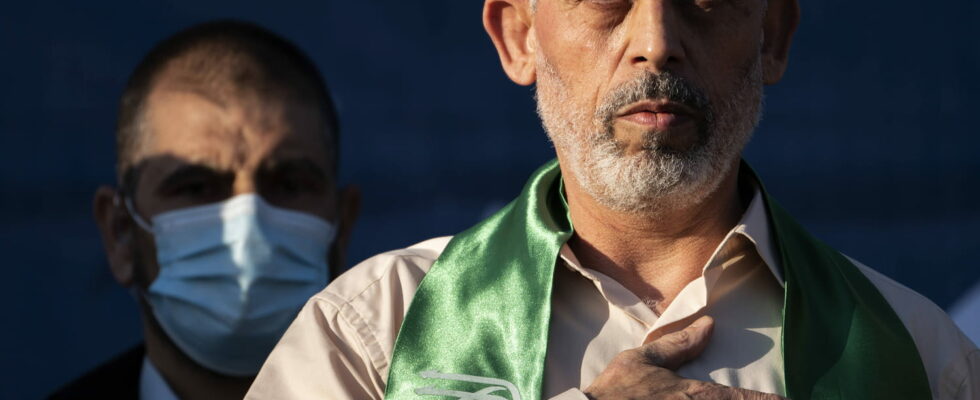Israel’s elimination of Hamas leader Yahya Sinouar raises questions about the continuation of the conflict in the Gaza Strip. The name of his successor could lead to major changes.
Considered the mastermind of the Hamas attack in southern Israel on October 7, 2023, Yahya Sinouar, the leader of the terrorist organization, was killed during an operation in Rafah in the south of the Gaza Strip, Thursday October 17, 2024. “Mass murderer Yahya Sinouar has been eliminated,” Israeli Foreign Minister Israel Katz said in a press release. The body of the Palestinian militia leader has been identified. For Israel, the elimination of Yayhya Sinouar appears to be an incontestable victory. It was one of the main objectives of the IDF, along with the release of the hostages.
Hamas’ influence “remains major in Gaza”
For Israeli Prime Minister Benjamin Netanyahu, the death of the Hamas leader could mark “the beginning of the end” of the war waged for more than a year in Gaza against the Palestinian Islamist movement. “This does not mean the end of the war in Gaza, but the beginning of the end,” he said on the night of Thursday to Friday. A position shared by France, the President of the Republic Emmanuel Macron called for seizing this “opportunity” so that the war is “finally stopped”.
The disappearance of Yahya Sinouar could amount to a “psychological explosion” for Hamas, according to David Khalfa, specialist in the region and author of Israel-Palestine, year zeroquestioned in the columns of Telegram. In fact, the death of the Hamas leader does not mean a pure and simple disappearance of the organization in the Palestinian enclave. In the past, Hamas has survived four wars and the assassinations of several of its political and/or military leaders. Despite the death of Ahmed Yassine in 2004, the movement still took control of the Gaza Strip, three years later in 2007. Yahya Sinouar also succeeded Ismaïl Haniyeh, killed in July by an Israeli strike.
“Even if the movement was very weakened, it (Hamas) reconstituted units, as we saw in Jabaliya (in the north of the Palestinian territory, besieged and bombed by Israel), and its hold remains major on Gaza, notably via the control of humanitarian aid”, explains David Khalfa in Le Télégramme. This is why, at least in the coming days, the bombings should continue and not decrease in intensity in the Gaza Strip.
Three profiles to replace Yahya Sinouar
So who could he be replaced by? According to CNN, which cites sources from American intelligence, several names have already been mentioned to succeed the leader of Hamas: First, Mohammed Sinouar, the brother of Yahya Sinouar who has been in charge of armed operations in Gaza since his appointment at the head of the political office. He supports strong and radical opposition to Israel and is disinclined to negotiations. In short, the strategy would be the same as that of his brother, which would absolutely not open the door to new discussions and, de facto, to a potential ceasefire.
Then, Khalil Al Hayya, elected to the Palestinian Legislative Council and senior Hamas official. He was one of the main negotiators with the former leader of the movement, Ismaïl Haniyeh and would remain open to talks, which would suit the United States, says CNN. Finally, Khaled Meshaal, head of the Syrian branch of Hamas, but his appointment may be prevented by his previous support for the Bashar Al-Assad regime in Syria.
Yahya Sinouar was one of the personalities most hostile to a potential agreement between the two parties, as an obstacle. If he were to be replaced by a more political profile like Khalil Al Hayya, with more perspective and different opinions, the dynamic could therefore change. “We call on the Israeli government, world leaders and mediating countries to transform this military feat into a diplomatic feat,” launches the collective of hostage families on X (formerly Twitter).
The hope of a dialogue with a view to a ceasefire?
It’s a certainty, “a page is turning” for independent analyst Eva Koulouriotis, as she asserts in Le Télégramme, after the disappearance of the Hamas leader. On Israel’s side, the second main goal remains the release of all the hostages, and there remain 97 out of 251. The death of the Hamas leader could also lead to a resumption of negotiations with a view to a ceasefire. fire, sine-qua-non condition for the release of the hostages.
For the moment, the negotiations have only resulted in a short week of truce, in November 2023 and the release of hostages against Palestinian prisoners. “The elimination of Sinwar is an opportunity for the immediate release of the hostages and opens the way to profound change in Gaza: without Hamas and without the control of Iran”, rightly indicated the Israeli Minister of Foreign Affairs, Israel Katz.
“Netanyahu could declare Hamas defeated and calm his base and his far-right allies by offering them this trophy. But we should not underestimate the fanaticism of some of his allies, who dream of recolonizing the north of the Strip. Gaza,” warns David Khalfa in Le Télégramme. The body of the Hamas leader could also act as a “trophy”, allowing the Israeli Prime Minister to affirm that he has kept his promise – “the eradication of Hamas”, as he had promised to the Israelis – offering him at the same time, the possibility of ending the war in Gaza.
Finally, in Lebanon, despite the continuation of Hezbollah missile attacks on Israel, the death of the Hamas leader could trigger a dialogue with a view to ending the conflict on Lebanese soil. Hezbollah has repeatedly announced that the shooting on Israel, launched “in solidarity with Hamas”, could be stopped if a ceasefire was concluded in Gaza. Hope remains.
